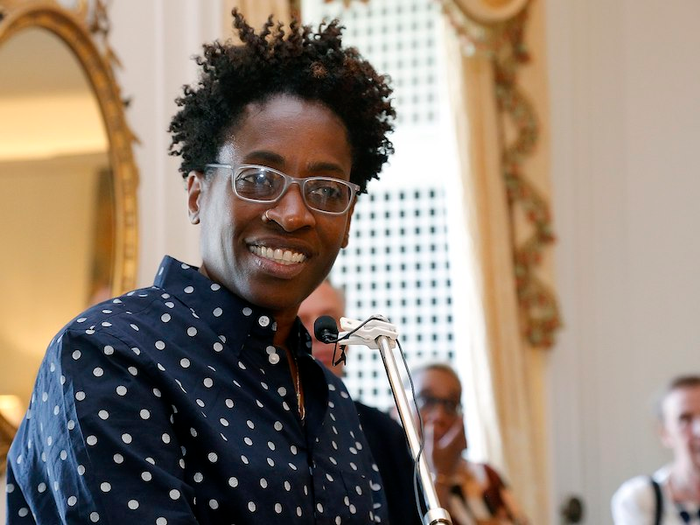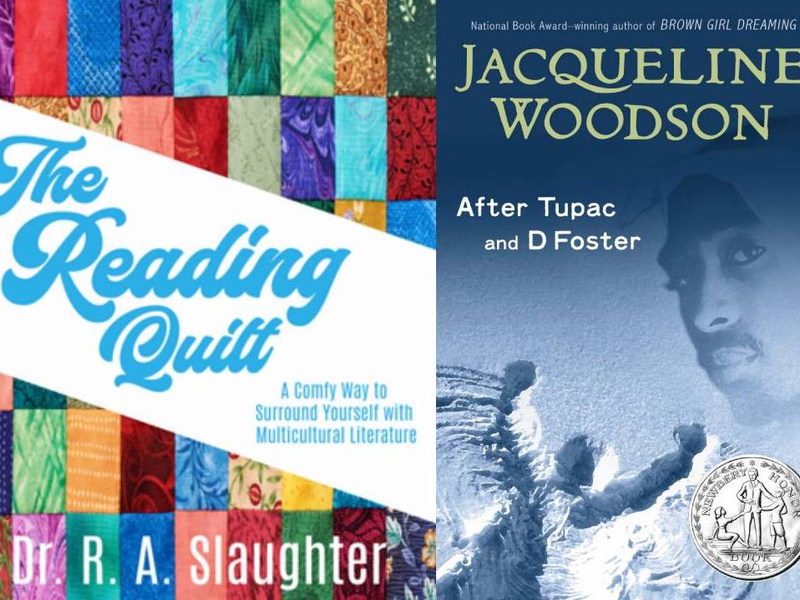Cover image of Tupac and D Foster from amazon.com
This year marks the 50th year of Hip Hop. It is this year that people all over the world will honor rap pioneers like The Sugar Hill Gang, Run DMC, and MC Lyte just to name a few. While these rappers, and thousands more, have made a significant impact on the music genre, Tupac Shakur, during his short tenure, shook the industry to its core. No one can deny that Tupac’s lyrical poetry shocked and delighted millions of fans even years after he died in 1996.
Without apology, Tupac spoke his truth about poverty, police brutality, and Black pride. His poignant words and enchanting bad-boy aura attracted many fans who also felt ignored, invisible, or on the fringes of society. In his persona as 2Pac, Shakur intrigued millions of listeners young and old, while “spitting” his gangsta rap lyrics. From 1989-1996, Pac was the pied piper of Hip Hop with his brown, puppy dog eyes and luscious eyelashes and brows.
In her book After Tupac & D Foster (Putnam, 2008), prolific young adult author Jacqueline Woodson introduces her readers to a group of Tupac’s biggest fans.

Each month “The Reading Quilt” provides a short review of a book that a teacher may use to spark conversations about culture and race, along with a learning activity that may help students understand human behavior. Using the acronym QUILT, the review offers readers information about the Quality of writing, Universal theme, Imaginative plot, a mini Lesson plan, and Talking points that stem from the book’s premise.
This month’s selection is After Tupac & D Foster. In her book of 26 chapters, Woodson, Columbus, OH native, weaves the story of three friends as they unpack Tupac while navigating the small borough of Queens, New York in the mid-1990s.

Image: Jaqueline Woodson. Source: Wikimedia Commons
Quality of writing: Woodson, a prolific writer, is a master storyteller. With ease, Woodson offers a pre-teen girl, a Queen’s, New York native who is pondering the complicated life of Tupac when the book opens. Although the narrator remains nameless, readers go on an emotional journey as the narrator grieves for Tupac, who survived multiple gunshots, a stint in jail, and a spiritual awakening that dismays most people but holds the narrator spellbound. When Tupac starts his quest for his “Big Purpose,” the narrator is inspired to go on a similar journey. Her journey starts with the story of three friends who call themselves “Three the Hard Way.”
Universal theme: Along with her childhood friend and neighbor Neeka, the two girls are itching to break free of their safe, close-knit neighborhood. On the cusp of adolescence, the two girls have yet to venture far from the square block that envelopes them in love, security, and peace. For just a moment, the girls wish they could experience life outside of the tight night community where neighbors care about their every move. It isn’t long before their wish comes true. Enter D Foster, who moves to Queens in the summer, bringing with her tales of a complicated life with her foster mom, an alcoholic birth mom, and the burning desire to stay an enigmatic figure that remains true to herself. It is this relationship that helps the girls understand that life can be convoluted, but the people who love you will always be your safety net.
Imaginative plot: Tupac’s hard-knock life takes center stage in this novel. The narrator and her friend keep a close watch on Tupac’s life, waiting with bated breath to see how he will move through the cruel world that misunderstands him. Through Pac’s “beautiful eyes” and rap lyrics, the friends analyze their own lives. “My mom is somewhere being somebody’s hot mess. He (Pac) sings about things that I’m living, you know. When he is singing the ‘Dear Mama’ song, that makes me think about my mama. It’s like his mama was a mess sometimes and he still loved her—people’s moms be all complicated, and it’s not like you got a bad mama or you got a good mama the way people be trying to judge and say,” D said.
Lesson plan: With Hip Hop celebrating its 50th year as a respected musical genre, we can all agree that rap deserves a prominent place in the classroom. Writers like Drs. Christopher Emdin and Toby S. Jenkins have offered a comprehensive outline for how to incorporate rap in each academic subject. Here are a few tips:
- Create a database of positive rap songs that students can use to practice their summary, annotating, and critical response skills. For example, Kendrick Lamar, Lil Durk, and Pop Smoke have several raps in their collection of songs that offer messages of perseverance, grit, and tenacity.
- Conduct an author study of a popular rapper, and write a comparison/contrast paper on how the rapper’s collection of rap songs reveals his true life.
- Use the experiences of various rap artists to teach the importance of copyright and the dangers of copyright infringement.

Dr. R. A. Slaughter’s (Doc) textbooks Turning the Page: The Ultimate Guide for Teachers to Multicultural Literature, and Turning the Page: A Guide to Securing Multicultural Literature for Schools, both published by Rowman & Littlefield and available in all bookstores, have brought Doc global recognition. For more information, log onto DrRachelSlaughter.info or check out “The Reading Quilt ” talk show, every Monday, at 3:30 pm on Philly Cam.





